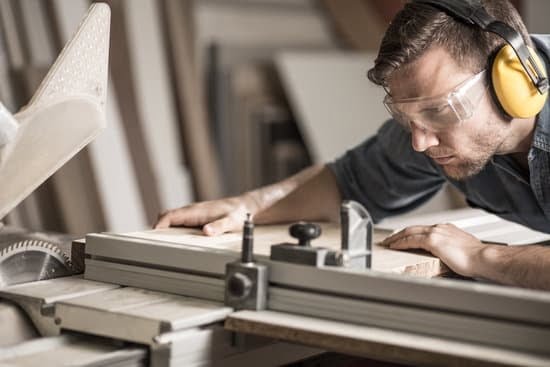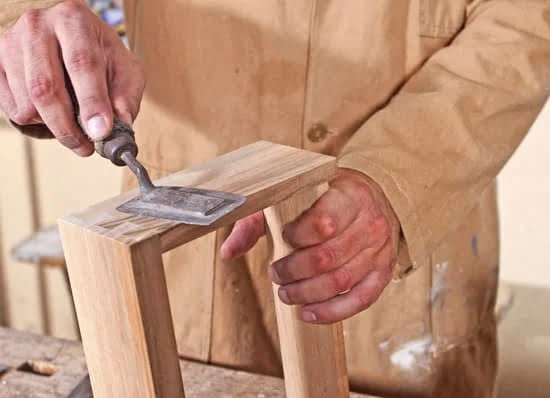What woodworking clamps do i need? Woodworking clamps are essential tools for any woodworker, as they provide the necessary pressure and support for gluing, assembling, and securing pieces of wood. Without the right clamps, achieving precise and secure joints can be challenging, if not impossible. In this article, we will explore the various types of woodworking clamps available in the market, their functions, and which ones are essential for beginners and advanced woodworkers alike.
Woodworking clamps come in a variety of types and sizes, each designed for specific tasks and projects. Understanding the different options available will help you choose the right clamps for your specific woodworking needs. Whether you are a beginner or an experienced woodworker, having a solid understanding of woodworking clamp basics is crucial to effectively and efficiently completing your projects.
For beginners, it can be overwhelming to navigate through the multitude of clamp options available. That’s why we will discuss essential woodworking clamps that every beginner should have in their workshop. Additionally, we will also explore specialized clamps for advanced projects that require more intricate and complex setups. Ultimately, choosing the right woodworking clamps for your project depends on several factors that we will cover in this article.
Types of Woodworking Clamps
Woodworking clamps are essential tools for any woodworker, as they play a crucial role in holding pieces of wood together firmly during the gluing, nailing, and screwing process. There is a wide variety of woodworking clamps available in the market, each designed for specific tasks and projects. Understanding the different types of woodworking clamps will help you choose the right ones for your particular woodworking needs.
Here are some common types of woodworking clamps:
1. C-Clamps: These are versatile clamps that can be used for a wide range of projects. They have a simple design with a C-shaped frame and a screw mechanism that allows for easy adjustment.
2. Bar Clamps: Also known as F-clamps, these clamps feature a long bar with adjustable jaws that can be used to clamp large or irregularly shaped objects.
3. Spring Clamps: These clamps have spring-loaded jaws that provide quick and easy one-handed operation. They are ideal for light-duty tasks and holding small pieces in place.
4. Pipe Clamps: These clamps consist of a length of pipe with fixed jaw at one end and a sliding jaw at the other end. They are commonly used for large glue-ups and panel assemblies.
5. Parallel-jaw Clamps: These clamps have jaws that remain parallel as they close, providing even pressure across the entire surface of the workpiece.
When determining what woodworking clams do I need,” it’s important to consider the specific requirements of your project, such as the size and shape of the pieces being joined, as well as the amount of pressure needed to hold them together effectively. Additionally, factors like cost, durability, and ease of use should also be taken into account when choosing the right woodworking clams for your project.
Woodworking Clamp Basics
Woodworking clamps are essential tools for any woodworker, as they provide the necessary pressure and support needed to hold pieces of wood together while glue dries or when carrying out intricate woodworking tasks. It is important to have a good understanding of the different types of woodworking clamps available in the market to be able to select the right ones for your projects.
There are several types of woodworking clamps, each with their own specific uses and advantages. Some common types include:
- Bar Clamps: They are versatile and can be used for a wide range of projects.
- C-Clamps: These are handy for holding pieces together temporarily.
- Pipe Clamps: Ideal for larger projects and provide ample clamping force.
- Spring Clamps: Lightweight and easy to use for smaller projects.
- Parallel Jaw Clamps: Perfect for holding large panels or doors together during assembly.
One basic concept that every woodworker must understand is the importance of even pressure when using clamps. Uneven pressure can cause the project to warp or become misaligned. Additionally, it is crucial to protect the wood surface from damage by using scrap pieces of wood between the clamp jaws and workpiece. This prevents indentations or marks on your project. Understanding these basics will help ensure successful woodworking projects.
Essential Woodworking Clamps for Beginners
Woodworking clamps are essential tools for any woodworking project, as they help to hold pieces of wood together firmly and securely while glue dries or when working on intricate joinery. For beginners in the world of woodworking, it can be overwhelming to know what woodworking clamps are necessary to have in their toolkit. Understanding the different types of clamps available and their specific uses is crucial for every woodworker looking to build their collection of tools.
One of the most versatile and commonly used woodworking clamps is the F-clamp, which is ideal for holding pieces of wood together when gluing or assembling frames. These clamps come in a variety of sizes, allowing for flexibility in different project scenarios.
Another essential clamp for beginners is the bar clamp, which features a long bar that can provide extra reach and pressure for larger projects. Additionally, pipe clamps are indispensable for securing large panels or tabletops during glue-ups.
When starting your woodworking journey, it’s important to invest in a set of spring clamps as well. These small but sturdy clamps are perfect for holding smaller pieces in place or providing temporary support during sanding or finishing work. With these basic woodworking clamps in your arsenal, you’ll be well-equipped to tackle a wide range of beginner-level projects effectively.
If you’re just getting started in woodworking, it’s essential to have a good understanding of what woodworking clamps you need to have on hand to ensure success with your projects. Different types of clamps serve various purposes and having a diverse selection will allow you to handle an array of tasks with ease.
| Woodworking Clamp | Typical Use |
|---|---|
| F-Clamp | Holding pieces together during gluing or assembling frames |
| Bar Clamp | Providing extra reach and pressure for larger projects |
| Pipe Clamp | Securing large panels or tabletops during glue-ups |
| Spring Clamps | Holding smaller pieces in place or providing temporary support |
Advanced Woodworking Clamps
When tackling more advanced woodworking projects, having the right clamps can make all the difference in achieving professional results. While basic clamps like bar clamps and spring clamps are essential for most projects, there are specialized clamps designed for specific tasks that can take your woodworking to the next level. Here are some advanced woodworking clamps to consider adding to your collection:
- Pipe Clamps: These clamps consist of a length of pipe threaded at both ends, with a movable jaw on one end and a fixed jaw on the other. They are ideal for large glue-ups and edge gluing.
- Parallel Jaw Clamps: Also known as cabinet or panel clamps, these clamps have jaws that remain parallel to each other throughout their range of movement. They are perfect for assembling cabinets and other large items with multiple joints.
- Toggle Clamps: These clamps are used for securing jigs, fixtures, and workpieces on workbenches or machine tables. They are especially useful in situations where traditional clamps may not fit or hold securely.
In addition to specialized clamps, there are also accessories such as corner clamping jigs and band clamp holders that can aid in achieving precise angles and tight glue-ups. Consider what type of projects you frequently work on and invest in advanced woodworking clamps that best suit your needs.
As you expand your collection of woodworking clams, it’s important to consider how they will complement your existing tools and serve the specific demands of your projects. Researching the various types of advanced woodworking clams available in the market is essential before making a purchase. Understanding how each type functions will help in determining which ones will be the most beneficial for your specific needs.
Remember to always prioritize quality when it comes to investing in advanced woodworking clams as they’ll be crucial in ensuring the accuracy and precision of your more intricate woodworking projects.
Choosing the Right Woodworking Clamps for Your Project
When it comes to woodworking, having the right clamps for your project is crucial. The right clamps can make a significant difference in the quality and precision of your work. However, with so many options available in the market, it can be overwhelming to choose the right woodworking clamps for your project. Here are some key factors to consider when selecting the appropriate clamps for your woodworking project.
Project Type and Size
The type and size of your woodworking project will determine the kind of clamps you need. For smaller and more delicate projects such as crafting jewelry boxes or picture frames, smaller clamps like spring clamps or hand screw clamps may be sufficient. For larger projects such as building furniture or cabinets, heavy-duty bar clamps or parallel clamps would be more suitable.
Clamping Pressure
Consider the amount of pressure the clamp can exert. Some projects require a stronger grip while others may only need minimal pressure to hold pieces together. Adjustable toggle clamps allow you to regulate the amount of pressure applied, making them versatile for different types of projects.
Material and Durability
Different materials will be used based on their durability: How long they last depends on how well you take care of them. Poorly made tools will cost you more in repairs and replacements than investing in good ones would have done initially. When choosing woodworking clamps, opt for durable materials like steel or aluminum that can withstand regular use.
These factors are essential considerations when determining what woodworking clamps do I need for your next project. By taking these factors into account, you can ensure that you have the right tools to support a successful and efficient woodworking experience.
Tips and Tricks for Using Woodworking Clamps Effectively
Woodworking clamps are essential tools for woodworkers of all skill levels. However, using them effectively requires some knowledge and practice. Here are some tips and tricks to help you make the most out of your woodworking clamps.
Proper Placement and Pressure
When using woodworking clamps, it’s important to ensure that the pressure is evenly distributed across the workpiece. Improper placement and uneven pressure can result in misaligned or warped wood. To prevent this, place the clamp jaws as close to the edge of the workpiece as possible without interfering with your project. Additionally, be mindful of how much pressure you apply – too much can damage the wood, while too little may not secure it properly.
Using Spreader Blocks
Spreader blocks are small pieces of wood used to distribute clamping pressure over a larger area. They can help prevent damage to your workpiece when using bar clamps or pipe clamps by spreading out the force exerted by the clamp jaws. To use them effectively, position the spreader blocks under the jaws of the clamp before tightening, ensuring that they cover a larger surface area than the clamp jaws.
Clamp Removal Technique
When removing clamps from your project, it’s important to do so in a controlled manner to prevent sudden movements that could damage your workpiece. Loosen the clamps gradually rather than removing them all at once. This will release any built-up tension slowly and evenly, reducing the risk of your project shifting or getting damaged.
By following these tips and tricks, you’ll be able to use woodworking clamps more effectively and achieve better results in your woodworking projects. Understanding proper placement and pressure, utilizing spreader blocks, and adopting a careful clamp removal technique are just a few ways to improve your skills with these essential woodworking tools.
Maintaining and Caring for Woodworking Clamps
In conclusion, woodworking clamps are an essential tool for any woodworker, whether beginner or advanced. The variety of clamps available in the market offers a wide range of options to suit different projects and needs. From the basic essentials for beginners to specialized clamps for advanced projects, there is a clamp for every task.
When considering what woodworking clamps you need for your project, it’s important to take into account factors such as the type of wood being used, the size and scope of the project, and the desired outcome. Additionally, understanding how to effectively use and maintain your clamps can significantly extend their lifespan and ensure their continued usefulness in your woodworking endeavors.
Proper care and maintenance of your woodworking clamps is crucial to ensuring their longevity. Regular cleaning, lubrication of moving parts, and storage in a dry environment can prevent rust and corrosion.
Taking the time to inspect your clamps for wear and tear will also help catch any issues early on, preventing further damage and maintaining their effectiveness. By following these tips and tricks for caring for your woodworking clamps, you can continue to produce high-quality work with tools that are in optimal condition.
Frequently Asked Questions
What Clamps Should I Have for Woodworking?
When it comes to woodworking, having a variety of clamps is essential. You’ll want to have a good mix of bar clamps, pipe clamps, C-clamps, and spring clamps. Each type serves a different purpose and having a range of sizes is also important.
How Many Woodworking Clamps Do You Need?
The number of woodworking clamps you need can vary depending on the projects you typically work on. As a general rule, having at least 12 clamps in various sizes and types is a good starting point. This allows you to handle most woodworking tasks effectively.
What Is the Difference Between G Clamp and F Clamp?
The main difference between a G clamp and an F clamp lies in their design and function. G clamps are designed with a fixed V-shaped jaw that grips the object being worked on, while F clamps have a sliding jaw that can be adjusted to the size of the workpiece.
Both have their pros and cons, so having both types in your collection can be beneficial for different applications in woodworking.

Hi everyone! I’m a woodworker and blogger, and this is my woodworking blog. In my blog, I share tips and tricks for woodworkers of all skill levels, as well as project ideas that you can try yourself.





